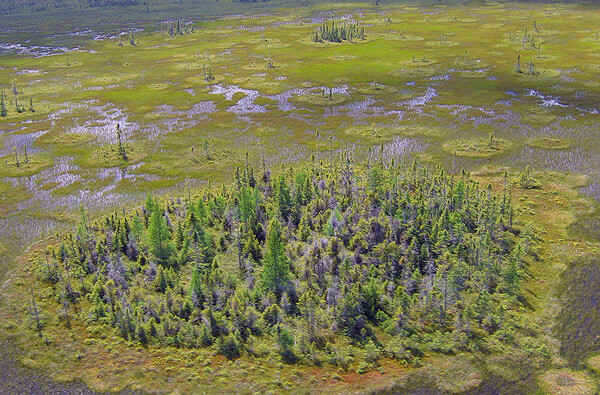News & Articles
Browse all content by date.

After years of driving primarily along the North Shore it is a serious shift of perspective to not have the big wet thing (Lake Superior) as my southern horizon. I was overly accustomed to it, but I can’t detract from the appeal of the big lake as a thing of fascination and beauty. There are and were a great plenty of visitors who drove north to be mesmerized by that body of water. The sight of waves curling white off shore or foaming ashore is endlessly appealing to a great many folk who come north to get lost in and enjoy the experience. I appreciate that even though part of me classes lake viewing as easy entertainment akin to smiling babies and cute puppies drawing a favorable response from a viewer. Having much of my life slept within a stone throw of Superior I’ve earned the right to be slightly jaded, however. Day and night through all the seasons and a lot of “weather” I’ve seen enough Lake Superior to claim I almost know it.
An impressively large and stirring (has its own mini climate after all) marine environment is not to be dismissed lightly. The big lake is a major factor in the Northland. But as I’ve been trucking around lately I’ve noticed what is to me an equally impressive volume of wetlands in the neck of this woods. You don’t have to go far up 53 to start noticing large areas of flat lowland with scrub vegetation. Driving and looking at aerial mapping it seems we’ve got a whoop of a lot of wetland up here as a sort of vegetative competitor to the H20 wet of Lake Superior. I’d be interested to know more; for example how earlier peoples managed to move across the land with so much of it being hip deep muck no good for either horse or seahorse.
As a young person I heard some northland areas referred to as islands when far as my untrained teen eyes could see there was no surrounding water to support the island distinction. It’s too bad my Iron Range school (quite a good institution) didn’t do more to inform its young denizens about the nature of local topography and glacial history causing it. Early inhabitants and visitors worked with these features using waterway connections to move among and around the islands of relatively solid ground where settlement was practical. Perhaps the biggest change that came with a European presence in this part of the new world was the gradual development of trails into roads. A wheel isn’t much good for crossing a wetland bog. If you’ll recall, after furs and timber one of the things that drew early interest to the area was the gold rush into the Ely area that would not have gained much ground without wagon and railroads to move heavy equipment and people. The gold didn’t pan out, but red ore was exposed in railway cuts. You know what happened next. In concert with development of other industries iron ore helped bring America forward as a modern state.
The dramatic changes made to the landforms along the Iron Range can’t be missed. Clearly there was environmental impact. Was it worth it? Could there have been partial development or maybe mining done with less defacement? Imagine iron ore mined exclusively underground and moved to steel mills only by water using canals and lakes. It’s hard to see the mills of Pittsburg rising if fed by coal and ore barges instead of rail lines and lakers. Without the many miles of rail, huge engines, and ore boats you wouldn’t need near as much steel and so the entire enterprise of steel production might have languished or remain incidental. It seems, though, that there’s a pleasing prospect in questioning technological and industrial development once you’re safely over the side where it’s a done deal. Having the ready use of minerals dug and resources pumped from all parts of the big blue planet we can securely ask the big questions and point an accusing finger at bad practices of the past.
In the late 50’s we heard the bad news of the Silent Spring. A decade later the sorrow was acid rain. In both bases there was legitimate cause for concern coming from arguments pushed hard. A similar thing happened with wetland decline caused by agricultural expansion led to programs designed to protect wetlands; a worthy goal already embraced by Ducks Unlimited. Wetland got to be so protected that in cases a home owner was held to account for wetland a lot smaller and different in nature than a duck pond. I recall an instance where a request for a foot path across a boggy patch was denied. The existing ground level boardwalk had to be removed so as not to impede the natural movement of water.
An elevated walkway on posts was OK, however, and even desirable because shade loving plants could then live under the walkway. I was not looked on with favor for wondering what shade loving vegetation was doing now and how it would get to the shade without crossing through sunshine. The cost of the properly constructed walkway (detailed plans had to be followed) was a lot more than the cost of pulling on high water boots and slogging along for which no permit was needed. If a person needs to impact wetland they can get a permit to do so and/or purchase wetland credits which will allow them to off X amount of wetland for their project by placing X amount of wetland somewhere else in protected status. Sounds fishy doesn’t it? But that’s the way things can go when protective regulation gets ahead of practical management. As seen lately in the California fires, the cost of not managing forest products for harvest means a lot of fuel is allowed to build up. Loggers have said that for a long time. Getting a balance between use and protection is not easy, possibly because environment is more complex than are we.
| Tweet |


